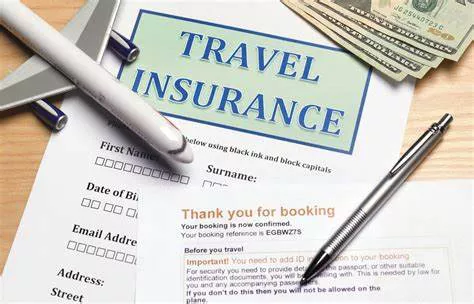Traveling is an exciting experience, but it also comes with uncertainties. Travel insurance provides peace of mind by covering unexpected events such as medical emergencies, trip cancellations, and lost luggage. However, understanding the cost of travel insurance, especially for a specific duration like 10 days, is essential for budgeting and planning your trip. This article delves into the factors affecting travel insurance costs and provides an estimate for a 10-day trip.
What is Travel Insurance?
Definition and Purpose
Definition: Travel insurance is a type of insurance that covers the costs and losses associated with traveling. It typically includes coverage for medical expenses, trip cancellations, lost luggage, and other travel-related issues.
Purpose: The primary purpose of travel insurance is to provide financial protection against unforeseen events that can disrupt or cancel a trip. It offers travelers peace of mind knowing they are covered in case of emergencies.
Types of Travel Insurance
Single Trip Insurance: Covers one specific trip. Ideal for occasional travelers.
Annual Multi-Trip Insurance: Covers multiple trips within a year. Suitable for frequent travelers.
Specialized Travel Insurance: Includes coverage for specific needs like adventure sports, cruises, or business travel.
Factors Affecting Travel Insurance Cost
Duration of the Trip
Impact on Cost: The length of your trip significantly affects the cost of travel insurance. Longer trips usually have higher premiums because of the extended risk exposure.
10-Day Trip: For a 10-day trip, the cost will be lower than for longer durations but still influenced by other factors like destination and coverage limits.
Destination
High-Risk Destinations: Traveling to countries with higher medical costs or political instability can increase insurance premiums. For example, travel to the United States generally results in higher premiums due to high healthcare costs.
Low-Risk Destinations: Countries with lower medical costs and stable political environments usually result in lower insurance premiums.
Age of the Traveler
Younger Travelers: Generally, younger travelers have lower premiums because they are less likely to have pre-existing medical conditions and are perceived to be at lower risk.
Older Travelers: Premiums increase with age due to a higher likelihood of health issues and a greater risk of medical emergencies.
Health and Medical History
Pre-Existing Conditions: Travelers with pre-existing medical conditions may face higher premiums or may need to purchase additional coverage to ensure these conditions are covered.
Health Assessments: Some insurers may require a health assessment before providing coverage, especially for older travelers or those with known health issues.
Coverage Options
Basic Coverage: Includes essential protection like medical emergencies, trip cancellations, and lost luggage. Generally more affordable but with limited coverage.
Comprehensive Coverage: Offers extensive protection, including higher coverage limits and additional benefits like trip interruption, travel delays, and emergency evacuation. Higher premiums but greater peace of mind.
Additional Factors
Number of Travelers: Group travel insurance for families or groups can sometimes be more cost-effective than individual policies for each traveler.
Travel Activities: Engaging in high-risk activities like skiing, scuba diving, or other adventure sports can increase premiums due to the higher risk of injury.
Insurance Provider: Different providers have varying pricing structures and coverage options, so it’s essential to compare policies to find the best value for your specific needs.
Estimating the Cost for a 10-Day Trip
Sample Cost Breakdown
Basic Coverage: For a 10-day trip with basic coverage, premiums typically range from $20 to $50 per person. This includes essential benefits like medical emergencies, trip cancellations, and lost luggage.
Comprehensive Coverage: For a 10-day trip with comprehensive coverage, premiums usually range from $50 to $150 per person. This includes higher coverage limits and additional benefits like trip interruption, travel delays, and emergency evacuation.
Cost by Destination
United States: Travel insurance for a 10-day trip to the United States can range from $40 to $150 per person due to high medical costs.
Europe: For European destinations, the cost can range from $30 to $100 per person, depending on the specific country and coverage options.
Asia: Travel insurance for a 10-day trip to Asian countries generally ranges from $25 to $80 per person, varying by country and coverage needs.
Cost by Age Group
Children (Under 18): Premiums for minors are generally lower, ranging from $15 to $40 for a 10-day trip with basic coverage.
Adults (18-65): For adults, premiums typically range from $20 to $100, depending on coverage options and destination.
Seniors (65+): Premiums for seniors can range from $40 to $150 due to higher health risks and the need for more comprehensive coverage.
see also: 8 Best and Cheapest Travel Insurance Options in Europe
How to Find the Best Travel Insurance for a 10-Day Trip
Compare Quotes
Online Comparison Tools: Use online tools to compare quotes from multiple insurance providers. This helps identify the best coverage options and prices.
Direct Contact: Contact insurance providers directly to get personalized quotes based on your specific travel plans and needs.
Read Reviews
Customer Reviews: Read customer reviews to understand the experiences of other travelers with different insurance providers. Look for feedback on claim processes, customer service, and overall satisfaction.
Expert Reviews: Consider expert reviews and ratings from trusted sources to get professional insights into the best travel insurance options.
Check Coverage Details
Coverage Limits: Ensure the policy provides adequate coverage limits for medical expenses, trip cancellations, and other essential benefits.
Exclusions and Conditions: Understand the exclusions and conditions of the policy. Know what is not covered to avoid surprises when making a claim.
Additional Benefits: Look for additional benefits like emergency evacuation, travel assistance, and coverage for high-risk activities if relevant to your trip.
Understand the Claim Process
Documentation: Know what documentation is required to make a claim. This typically includes receipts, medical reports, and incident reports.
Claim Procedure: Understand the procedure for filing a claim, including timelines and contact information for the insurance provider.
Customer Support: Ensure the insurance provider offers reliable customer support to assist with any questions or issues during the claim process.
Maximizing Value from Your Travel Insurance
Choose the Right Coverage
Assess Needs: Evaluate your travel plans and needs to choose the right coverage. Consider factors like destination, activities, and health risks.
Avoid Over-Insuring: Don’t purchase unnecessary coverage. Choose a policy that provides adequate protection without over-insuring.
Take Advantage of Additional Benefits
Travel Assistance: Utilize travel assistance services provided by the insurance policy, such as help with medical referrals, travel arrangements, and emergency assistance.
Trip Cancellation and Interruption: Ensure you understand the conditions for trip cancellation and interruption coverage, and utilize it if your trip is disrupted.
Lost Luggage: If your luggage is lost or delayed, make use of the baggage coverage provided by the policy. Keep receipts for any essential items purchased due to lost luggage.
Maintain Clear Communication
Report Incidents Promptly: Report any incidents, such as medical emergencies or thefts, to the relevant authorities and your insurance provider as soon as possible.
Follow Up on Claims: Keep in touch with your insurance provider during the claim process. Provide any additional information or documentation promptly to avoid delays.
Conclusion
Travel insurance is an essential aspect of planning a trip, providing financial protection and peace of mind against unforeseen events. The cost of travel insurance for a 10-day trip varies based on factors like destination, age of the traveler, health, and coverage options. By understanding these factors and comparing policies, travelers can find the best travel insurance to meet their needs and ensure a safe and enjoyable trip. Whether you’re a young traveler, a senior, or traveling with family, the right travel insurance policy can make all the difference in handling unexpected situations with confidence and ease.




















